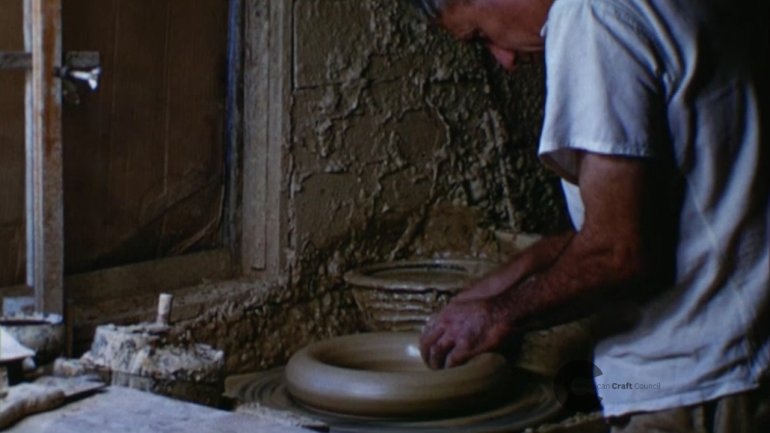Old School Cool(ing): Waymon Cole Throws a Ring Jug
Today, Seagrove, North Carolina, is known to have the largest concentration of working potters in the nation with more than 100 artists continuing the local traditions of hand production. North Carolina’s history in pottery dates back to colonial times, and its success was due, in part, to the quality of the natural clay deposits and the location for trade. Potter Waymon Cole's roots run almost as deep.
Waymon Cole’s great grandfather, Raeford Cole, started making pots in Moore County, North Carolina, more than 180 years ago. Waymon was 14 years old when his father, Jacon B. (“Jace”) Cole, taught him to turn. In an oral interview in Raised in Clay by Nancy Sweezy, Waymon waxes, “Just to have my hands in the clay all the time was wonderful to me and still is.”
He later studied glaze chemistry, developing new recipes for their shop. His father started the namesake shop J. B. Cole Pottery in 1923, and Waymon and his sister, Nell Graves Cole, later inherited it. The shop was known for its utilitarian pieces, but also did a lot of production work. At its peak, it turned out 2,600 pieces every two weeks, with standing orders for more from individuals, collectors, and businesses.
In this film from the ACC Archives, we see Waymon Coles, circa the 1960s, throwing and assembling a ring jug. These can be tricky to throw but Waymon, who had been turning for more than 40 years at the time of filming, makes it look as easy as pie and certainly second nature to him.
Ring jugs are a rather unique form, with roots as far back as ancient Greece. According to the Chipstone Foundation, this vessel form most likely came to the United States via German and Moravian immigrants, many who settled in North Carolina. Ring jugs were intended to hold liquid. The ring form allows greater surface exposure keeping the contents cooler – and it can be set down flat or slung to a saddle or pack. This is just one example of the many utilitarian stoneware and earthenware pieces the Coles were known for.
Heather Carroll is an art historian with an interest in museums and archives pursuing her MLIS degree from St. Catherine University and a Museum Studies Certificate at the University of St. Thomas. This summer she’s a 2016 Windgate museum intern working with ACC Library staff to digitize and edit audio, video, and film footage from the ACC archives.




